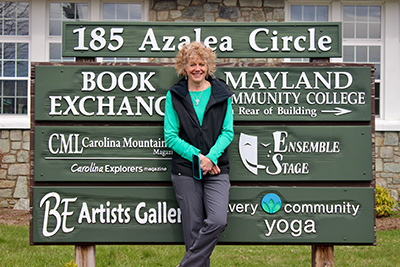Publisher’s Note

Ever since I was old enough to wander around in our yard and explore the various nooks and crannies, my eyes were always drawn upward. There would be amazement when I plopped down on the cool grass and looked up to see the tall branches of our giant oak tree swaying in the wind and I was certain the tips of those branches could touch the clouds.
My assumption was that I would be able to come year after year and sit beneath that tree and reflect on my childhood. That it would stay strong and withstand the powerful seasonal winds. The fact that it had an intricate root system was beyond my scope of knowledge at the time. I simply loved that it provided shade in the summer and beautiful color in the fall. It was a great spot to set up my parents’ card table for our lemonade stand for passersby.
My fascination around trees has continued to this day—especially in the aftermath of Helene.
As I lean up against this stack of wood—just one of hundreds across our area—the realization occurs that these massive, downed trees were once strong and majestic soldiers in the woods and in folks’ yards, providing shelter, nourishment and shade. They were like my favorite childhood tree in our front yard; but Helene was a force that even these sturdy trees could not withstand.
I stopped on my hike today to examine an 80-plus-ft. tree I believe to be an oak. It looked like it had been uprooted by a giant—literally ripped from the earth. I wanted to look closer at the soil where it grew, at the intertwining root systems, the fabric of the earth. I wanted to check out what a dear friend had talked about just days before. “What you are experiencing with your community coming together, even after six months, is just like the Mycelium (referred to as the ‘Wood Wide Web’) in the earth.” While our area is literally being knit together, like a carefully woven and colorful blanket, the underground fungal network for trees and other plants to communicate is doing the same—knitting together the nutrients and organic matter needed to thrive.
Above ground, the immense activity of local and visiting volunteers—some from as far away as Oregon—is inspiring, as they work tirelessly to continue to get families back into homes, keep local businesses thriving, and help folks with all their needs—emotional, physical and financial. Much work has been done to recover from Helene, yet there is much yet to accomplish.
While we are open and welcome our visitors, we also ask each other to tread lightly. We hope you take this issue with you and use it as a guide of where to hike, explore, play, create, experience the arts, shop, dine, and stay; and we invite you to return again and again to witness our ongoing recovery.
Thanks for picking us up; and our sincere appreciation goes out to our advertisers for keeping CML free to our readers.
Happy Spring!
~ Babette
